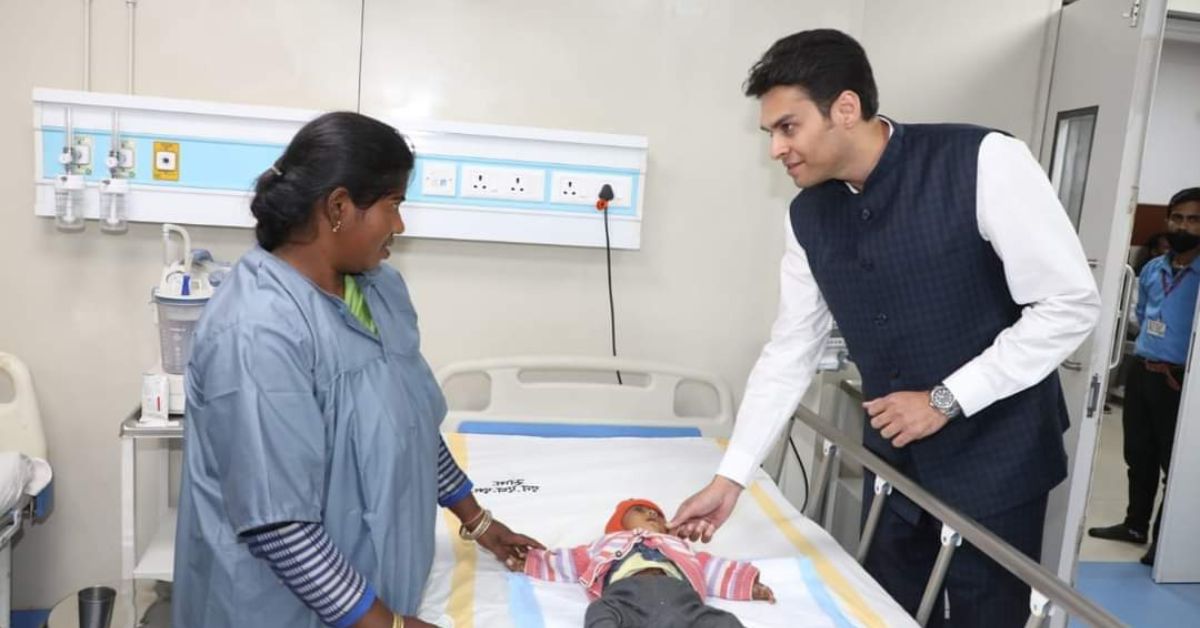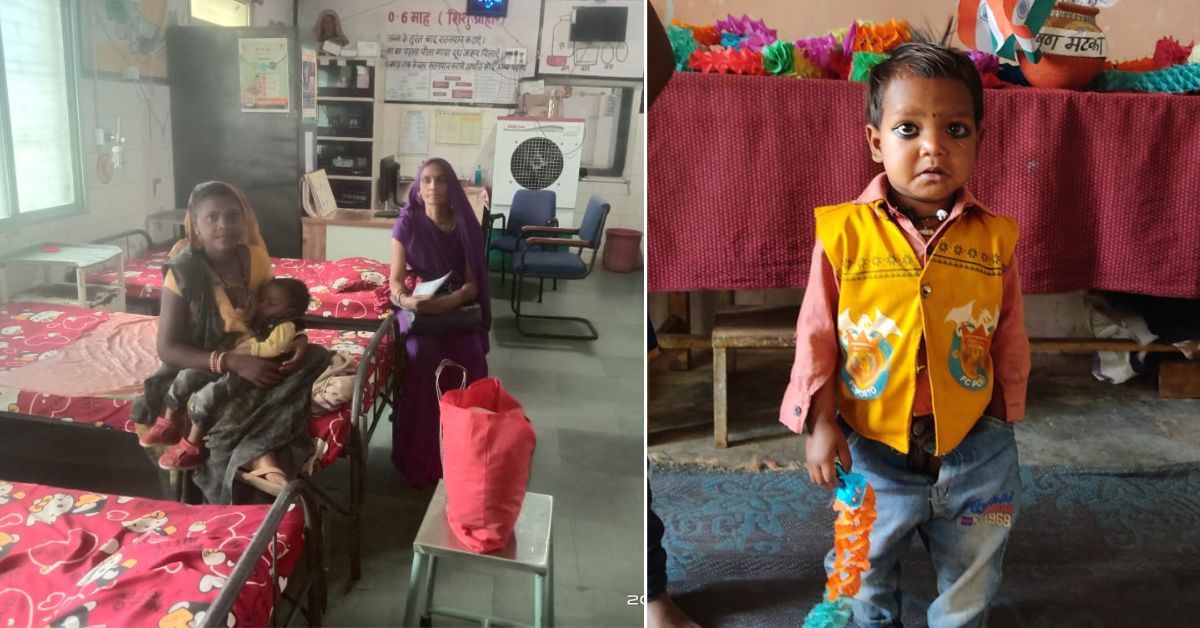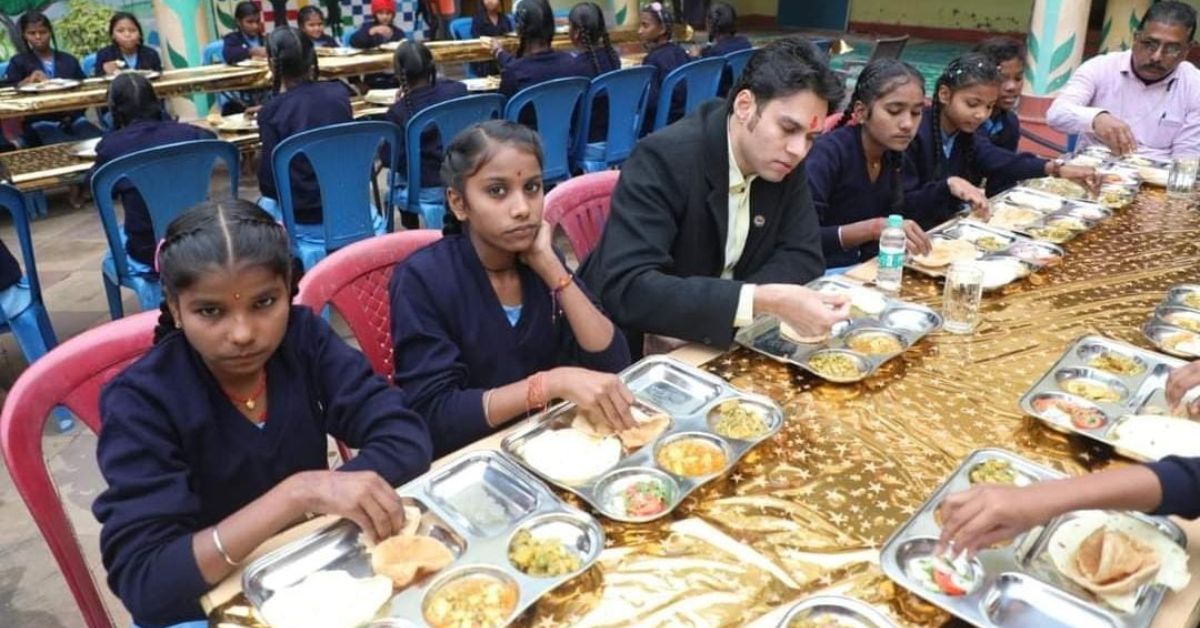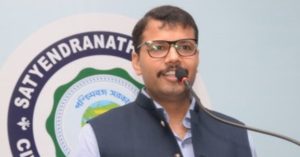What If Each Indian Could Sponsor Nutrition For 1 Malnourished Child? IAS Officer Makes it Possible
District Collector Avi Prasad started a special programme in Katni district, Madhya Pradesh, asking people to adopt malnourished kids and give them nutritional support — this helped reduce malnutrition by 30 percent. Here’s how you can join the IAS officer's initiative.

Last September, all of a sudden, Pooja Bai Kol’s toddler Deepanshu fell sick. For the next two days, her son suffered severe diarrhoea, making him so weak that the family had to admit him to the nearby nutrition rehabilitation centre.
Born to a family of daily wagers, the child was malnourished. “He weighed nine kg then, whereas, he should ideally have been above 10 kg. We lacked enough resources to offer him good nutritional food. I cooked lentils only on alternate days,” Pooja tells The Better India.
After a treatment that continued for seven days, Pooja brought her son back home. Deeply concerned for her son’s health, she was able to heave a sigh of relief only after three months when Deepanshu finally showed improvement.
“We started including green vegetables like bottle gourd, all kinds of lentils, soybean bari (nuggets), jaggery, peanuts, sattu with milk, and grams in his diet. My son now weighs 10.5 kg. He remains happy and plays all day now,” smiles the 27-year-old resident of Dhanvahi village in Katni district.

This health improvement in the child was made possible with the support of District Collector Avi Prasad, who launched a unique initiative to fight against the issue of malnutrition in Madhya Pradesh. In a remarkable effort, he roped in the community members and encouraged them to adopt malnourished children to improve their nutritional status. Interestingly, this approach has helped the district reduce malnutrition by nearly 30 percent.
In a conversation with us, the District Magistrate sheds light on how he aims at eradicating malnutrition in his district with this unique model.
Where every second child was malnourished
It was during one of his visits to an anganwadi centre when IAS Avi Prasad saw a year-old Sakshi lying in her mother’s arms. “She looked very weak. After inquiring, I came to know that her father was unemployed and they could not afford to look after her nutritional requirements. She also developed a heart disease because of a lack of a proper diet,” he tells The Better India.
“I sought help from the community, and one of the industrialists wished to adopt that child. With his support, Sakshi underwent a hernia operation and was also provided with additional nutrition via a special nutrition kit. Because of the timely intervention, she is a healthy and nourished child today,” he says, adding, “This is when I thought of replicating this approach to help other children in similar situations,” says the IAS officer.

It is noteworthy that nearly half (49.5 percent) of under-five children in Katni suffered from stunting (below-average height for their age), with 44 percent of these children also being underweight (weighing below the healthy range for their age).
Avi points out that the economic burden was the major factor behind the malnutrition crisis in the district. “Most of these impoverished families are unable to afford a nutritious diet for their children. Although the Government allocates additional take-home rations that comprise wheat, rice, or grams for every malnourished family, we decided to do something extra,” says Avi, who joined Katni as a collector in November 2022.
“If a young kid continues to be fed a poor diet, it results in cognitive and intellectual disabilities throughout their life. More than the ration support, I had understood these families should be provided emotional support in terms of counselling and care, towards understanding the need behind investing in their child in the initial years,” he adds.
This birthed an idea to engage the community to combat malnutrition in the district.

For the community, by the community
As part of the Integrated Management of Acute Malnutrition (IMAM) programme of the Indian Government, which provides take-home rations to children, the IAS officer appealed to the community of Katni to adopt malnourished kids to provide them with proper nutritional care.
“Under this programme, anyone can volunteer to look after malnourished children. As part of this, they are expected to provide them with nutrition kits for at least three months,” he informs. The kits comprise a variety of vitamin and protein-rich food products — including amla candy, soybean nuggets, grams, sattu, Horlicks, jaggery, groundnuts, and lentils.
The District Collector roped in a team of paediatricians, child nutritionists, and experts from the women and child development department to come up with the kit, specially designed for malnourished children.
“We are providing rations worth Rs 600 per child every month. This ration kit was expected to be provided once or twice a month. The additional ration support was given for three to six months to MAM [moderate acute malnutrition] kids, whereas nine to 12 months for SAM [severely acute malnutrition] children,” he says.

The initiative, the IAS officer says, has brought people from all walks of life and groups — including industrialists, doctors, non-profit organisations, and individuals — to join the nutrition campaign of the district administration.
When the programme kicked off in January 2023, there were 232 SAM and 1,318 MAM children in the district. Within a year, the nutrition campaign resulted in an improvement of 27 percent and 23 percent in the nutrition level of SAM and MAM children, respectively.
“In the first phase of the programme, the district was able to adopt around 600 malnourished children. But we still have at least 1,000 malnourished children in our district. Of these, 50 are severely SAM kids. In the second phase, we will try to bring this number to a minimum,” says IAS Avi Prasad.
To the IAS officer, the results of the initiative have brought immense contentment. “It was satisfying as well as a learning experience for us. We could have done this work through Government finances, but the effectiveness of the programme was ensured as the community was involved. The community mobilisation will also ensure that this work keeps on going, irrespective of who the officer is,” he adds.
It takes just Rs 600 to sponsor nutritional meals for one malnourished child. If you wish to contribute, here are the bank account details:
Atal Bal Mitra Yojana
Bank account number: 40560100000070
IFSC code: BARB0INDKAT
Bank of Baroda, Industrial area, Katni.
For more details, you can also contact Nayan Singh, district programme officer, Women and Child Development department, Katni, at +91 96309 81671.
(Edited by Pranita Bhat. All photos: Women and Child Development office, Katni, Madhya Pradesh)
If you found our stories insightful, informative, or even just enjoyable, we invite you to consider making a voluntary payment to support the work we do at The Better India. Your contribution helps us continue producing quality content that educates, inspires, and drives positive change.
Choose one of the payment options below for your contribution-
By paying for the stories you value, you directly contribute to sustaining our efforts focused on making a difference in the world. Together, let’s ensure that impactful stories continue to be told and shared, enriching lives and communities alike.
Thank you for your support. Here are some frequently asked questions you might find helpful to know why you are contributing?


This story made me
-
97
-
121
-
89
-
167













